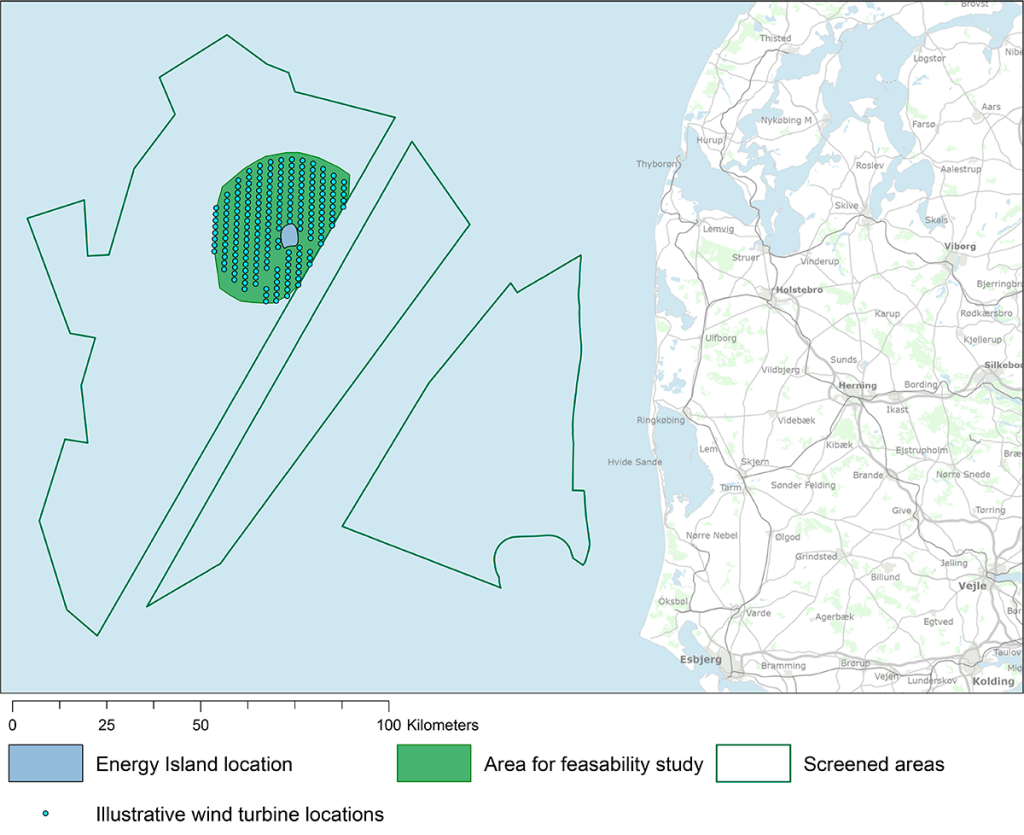
Denmark’s planned creation of an artificial island around 100 km off its coast, which will be surrounded by 10 offshore wind farms, has hit a stumbling block after forecast construction costs significantly exceeded the Danish Government political threshold for profitability. The government has delayed a public tender for construction of the island and is now assessing new approaches to energy islands as the current costs and risks are considered too high to continue.
The island, slated to be Denmark’s largest ever construction project, has been designed to generate renewable energy, distribute it to Denmark and Europe, and serve as an epicentre for green technology development. Among the ambitions of the North Sea Energy Island project are for facilities to be laid out to accommodate the creation of green fuels for the aviation and shipping industries.
Despite the delay, the project currently remains within its timeline, which spans a tender in 2023, feasibility studies and early production by 2025, construction of the island by 2028, installation of the power grid by 2031, and construction of the first 3 GW phase of wind farms by 2033. A further 7 GW of wind farms are projected to follow by 2040.
“The North Sea has a massive potential for offshore wind – and the government still has the ambition to realise an energy island in the North Sea. The project is important for both the green transition and the energy security of Denmark and the rest of Europe.” said Denmark’s minister for Climate, Energy and Utilities, Lars Aagaard.
Partners in the North Sea Energy Island Ørsted and ATP said they expect that power-to-hydrogen plants will be operational on shore before the island is built, but there are a number of organisations investigating whether it would prove economical to produce hydrogen on the island, or even directly in the turbines themselves, for transport by pipeline to shore. Among the solutions to be explored for the project is whether the use of platforms would be technically and economically advantageous in terms of cost, risk and sustainability.
A second energy island project, based on the existing island of Bornholm, continues to make progress towards its goal of producing 3 GW of offshore wind power to Germany and the Netherlands by the early 2030s. Beyond the government-approved plans for Bornholm Energy Island, there is the potential for an ammonia bunkering for ships, and power-to-fuel and biogas production facilities.



